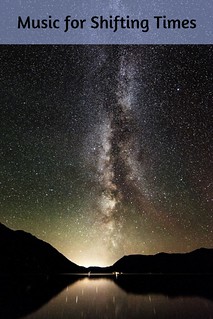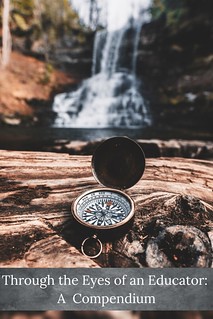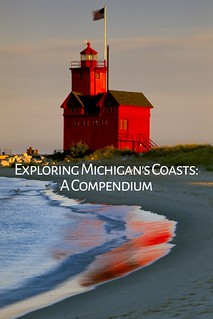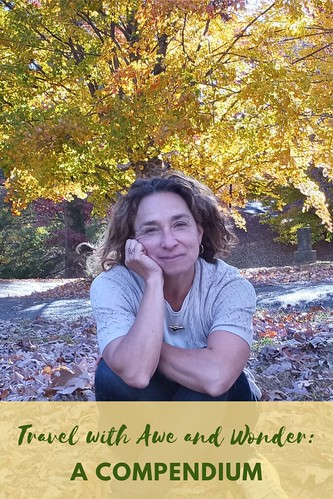Napier, New Zealand: Art Deco Capital of the World
Napier, the center of the Hawke’s Bay region, hasn’t always boasted a claim that it is the Art Deco Capital of the World. Our one day tour of this charming harbor town was guided by John Hanlon who operates Hawkes Bay Scenic Tours. John provided historic commentary along the way.
The Hawkes Bay Scenic Tours Van, our coach for the day
Interestingly, the city didn’t think much about its architectural style until fairly recently and there are at least two stories about how its enthusiasm surfaced. In the first tale a tour ship docked in port one day and passengers clamored ashore to explore the quaint shops. Afterwards, Napier’s town fathers met with the ship owners for feedback and were told that the tourists were most impressed by the Art Deco.
A second, better-documented, story suggests that a group of visitors from the International Organization for Economic Co-operation and Development asked their Napier hosts, “Do you realize what you’ve got here?” After that, local enthusiasts initiated the first Art Deco walk and things snowballed from there.
Whatever caused the current fascination with Art Deco, Napier has built and refurbished many structures in that style. Today’s visitors are greeted by 120 buildings flaunting typical Art Deco sophistication, some influenced by Spanish Mission and Stripped Classical features. Napier’s Art Deco includes buildings created by Louis Hay, an admirer of world-renowned Frank Lloyd Wright. Napier claims to be the city with the highest concentration of Art Deco buildings in the world (although Miami, Florida has a larger actual number).
Downtown Napier, New Zealand
The reason for much of the Art Deco construction in Napier can be traced back to a horrific tragedy. At 10:47 a.m. on February 3, 1931, the Hawke’s Bay earthquake shook the area. Much of the city was razed by fires that broke out following the disaster. 258 people died, 162 of those were residents of Napier. The fires spared only a building or two, but out of the ashes and rubble rose another city. The city continues to get between 100 to 200 earthquakes a year, and the land continues to rise an average of 12.mm annually, but there has never again been such wholesale devastation. Today 59,000 people call Napier home.
In the wake of the fires’ destruction there was a huge need for architects and builders and they flocked from many countries to help reconstruct the city as inexpensively as possible. In 1931, the year of the earthquake, Art Deco was reaching its height of popularity.
Art Deco, which often reflects opulence, had become fashionable as a reaction to the austerity accompanying World War I. In spite of the fact that it characteristically indulges excess, Art Deco was imported to Napier as a matter of economics and practicality. The square base foundation of this architectural style was cheap to build. Constructed of concrete, it was also believed to be strong enough to resist earthquakes and fire. The typical relief stucco ornamentation was actually an economical way to adorn buildings with detail.
Often Art Deco structures situated at the intersection of two streets have their corresponding corner angle splayed to create an entrance equally accessible from either street. Although Art Deco is a rather simplistic design, the façades can be spectacular. Building material can be traditional woods, like English Oak, or chrome and glass. Either way, the style is clearly Art Deco. Decorative themes include sunbursts and fountains, skyscraper shapes, geometrics, and shapes of ancient cultures. In Napier the latter appear as Maori motifs.
In addition to the historic detail of the earthquake, fires, and Art Deco, John took us back a thousand years before Captain James Cook first explored the Napier region of New Zealand in 1769. It was a time when the Maori people, drawn by the abundance of food, made the area their home. The culture, customs and spirituality of the Ngati Kahungunu still infuse the land with character and charm. Napier was named for Sir Charles Napier, a British general and hero of the Battle of Meeanee in the Indian province of Sindh. Napier is the Scottish word meaning “no equal.”
After our city tour, we headed towards the mountains. John pointed out herds of fenced red deer raised for the velvet on their antlers. In China the velvet is sold as an aphrodisiac. I couldn’t help but think that exporting the little blue pill might result in greater profit, insure a desired effect, and spare the deer.
As we approached a mountain summit, we stopped, parked, and then climbed the last few feet to a look-out where we inhaled panoramic vistas. This would be a day without a single museum, cathedral or statue. We were ready to begin a wine tasting adventure. John planned to introduce us to four inviting wineries.
Views from a Mountain Lookout
Bob and Julie Royce
Our first stop was Askerne Winery, a small, single estate winery where the owners produce wines that reflect the region as well as the vintners’ unique wine making philosophy and passion. I particularly liked their dessert wine, but I decided that carrying wine back to the United States was cumbersome and impractical - especially when we live only minutes from fabulous wineries in my adoptive state of California. Trish and Joe, the couple sharing this adventure with us, bought several bottles that they planned to pack in their suitcases. Apparently they had forgotten how airlines handle luggage. I imagined a large suitcase spiraling down the carousel, dripping red and gold nectar of the gods. Having the winery ship it might have been a wiser decision.
Our second stop was Matariki Winery located on the fringe of the world famous “Gimblett Gravels” a district with a perfect gravelly soil for growing grapes. We noticed that at the end of each row of vines there was a beautiful rose bush. I commented that it was nice that the vintners dressed up their arbors, but John said it had little to do with beauty. Roses are susceptible to insect pests (like aphids) and planting a rose bush at the end of a row makes it easy to get an early jump on any insect problem that could affect the vines. I guess it's sort of like having a taster for your food.
Napier Vineyards
Our third winery was the Church Road Winery. Built in 1897, it is the third oldest winery in the country. In addition to providing a tour of their working winery, Church Road allows visitors to wander their museum, a tribute to 100 years of winemaking. If you get hungry during your visit, you may stay for lunch. In 1949 Church Road produced and sold its first commercial Cabernet Sauvignon and still garners awards for that variety. Church Road calls its 2006 TOM Chardonnay (released in 2010) the best Chardonnay they have ever produced. The original “TOM” was a Red Bordeaux blend of Cabernet Sauvignon, Merlot, Cabernet Franc and a little Melbec, named to honor Tom McDonald, a ground breaking New Zealand vintner of the 1960s.
We took a short break between wineries and indulged our palates with a light lunch at the Wild Rose Cafe and Nursery. John couldn’t have chosen a more gracious setting. As the name implies we were surrounded by beautiful rose bushes. Nestled in lush vegetation the tables afforded us a chance to relax and enjoy the profusion of color.
The Wild Rose Café and Nursery was the perfect place for lunch
Our final winery was the Mission Estate Winery which claims to be the oldest winery in the country. Fountains welcomed us. The main section of the home is graced at each end by a shorter wing running at right angles to it. This huge structure was transported to its current location from an original site further down the mountain. The feat required cutting the building into eleven pieces and hauling each section up the steep incline and then reconstructing on site. Unlike small modular homes transported by truck, this was a monster building that had to traverse curved roads scaling the mountainside. It took each piece two days to make the journey, but the resulting Mission Estate is magical. Standing in the back gardens overlooking the city, I daydreamed of being the vintner who first lived on these romantic grounds.
Mission Estate Winery
Wine tasting at Mission Estate Winery
The view from the back gardens of Mission Estate Winery made me wish I lived there
We were ready to call an end to the day, but John let us make a last unscheduled stop at the ceramic studio of artist Penny Madden. While tasting wine at the Mission Estate Winery, Trish had noticed and fallen in love with the pitcher that held water for rinsing your mouth between wines. We searched the gift shop to see if a duplicate could be purchased, but we came up empty-handed. Trish, being a tenacious woman, mentioned to John that she wanted to check with the winery owner and inquire whether she could buy the working version. John told Trish he could do one better, he knew the ceramic artist who had made it, and we could stop at her studio on the way back to port. It turned into an hour-long side trip because Joe and Trish were torn over which of two pieces to buy. Joe wanted the water pitcher that had originally captivated his wife, while the fickle Trish had found a serving tray that she liked even better. In the end they purchased both at a cost of about $300. I loved the pieces, but convinced myself I didn’t need more stuff. Even with that mindset I relished the stop. Ms. Madden is a talented artist and looking at her ceramic creations was sheer pleasure.
The Ceramic Art Studio of Penny Madden
Antique cars lined our way to the cruise ship and bid us farewell from Napier
John and his wife, Margaret, also run Nest Haven, a Bed and Breakfast where they offer two modern bedrooms in a private wing; each with a private bath.
For additional details about day trips check www.hbscenictours.co.nz. For further information about the Bed and Breakfast check www.nesthaven.co.nz or contact John and Margaret at relax[at]nesthaven.co.nz.
Julie Royce, the Travel Adventures Editor for Wandering Educators, is the author of Traveling Michigan's Sunset Coast and Traveling Michigan's Thumb, both published by Thunder Bay Press. She writes a monthly column for Wandering Educators.
All photos courtesy and copyright Bob Royce.
Disclaimer: We paid for one tour and got the other free.
-

- Log in to post comments



















